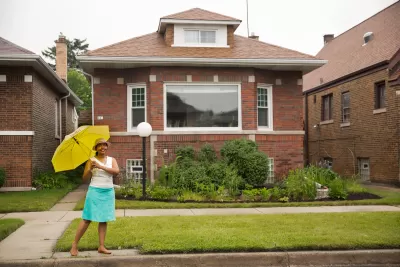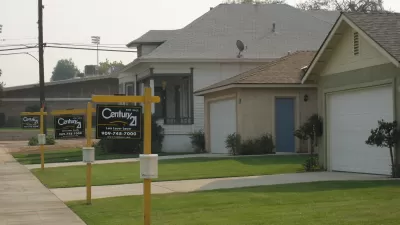Following reports that Black Americans owned homes in 2017 than in 1983, banker Teri Williams offers recommendations to diversify homeownership across the United States.

The gap in homeownership between black and white Americans is greater than it was in 1983, according to the "State of the Nation's Housing 2018" report from the Joint Center for the Study of Housing of Harvard University; just 43 percent of Black Americans owned homes in 2017, compared with 72 percent of whites. Teri Williams, a leader in the #BankBlack movement, lays out five strategies to combat the effects of the nation's racial wealth gap, shortage of affordable housing, and historically racist housing and banking policy.
One notable suggestion is beefing up first-time homebuyer programs, not only by increasing funding, but also by offering up municipal property. Rather than auctioning property acquired through foreclosures to investors, "a better alternative to diversify neighborhoods, offset gentrification and support community values would be to deed these properties to Black residents, organizations that offer first-time homebuyer programs or local private developers that partner with these organizations," Williams writes. Another recommendation is awarding Community Reinvestment Act (CRA) credits to banks for every loan provided to a Black first-time homebuyer.
FULL STORY: Five Steps Toward Ending the Black Homeownership Crisis in the US

Planetizen Federal Action Tracker
A weekly monitor of how Trump’s orders and actions are impacting planners and planning in America.

Map: Where Senate Republicans Want to Sell Your Public Lands
For public land advocates, the Senate Republicans’ proposal to sell millions of acres of public land in the West is “the biggest fight of their careers.”

Restaurant Patios Were a Pandemic Win — Why Were They so Hard to Keep?
Social distancing requirements and changes in travel patterns prompted cities to pilot new uses for street and sidewalk space. Then it got complicated.

Albuquerque Route 66 Motels Become Affordable Housing
A $4 million city fund is incentivizing developers to breathe new life into derelict midcentury motels.

DC Area County Eliminates Bus Fares
Montgomery County joins a growing trend of making transit free.

Platform Pilsner: Vancouver Transit Agency Releases... a Beer?
TransLink will receive a portion of every sale of the four-pack.
Urban Design for Planners 1: Software Tools
This six-course series explores essential urban design concepts using open source software and equips planners with the tools they need to participate fully in the urban design process.
Planning for Universal Design
Learn the tools for implementing Universal Design in planning regulations.
Heyer Gruel & Associates PA
JM Goldson LLC
Custer County Colorado
City of Camden Redevelopment Agency
City of Astoria
Transportation Research & Education Center (TREC) at Portland State University
Camden Redevelopment Agency
City of Claremont
Municipality of Princeton (NJ)





























